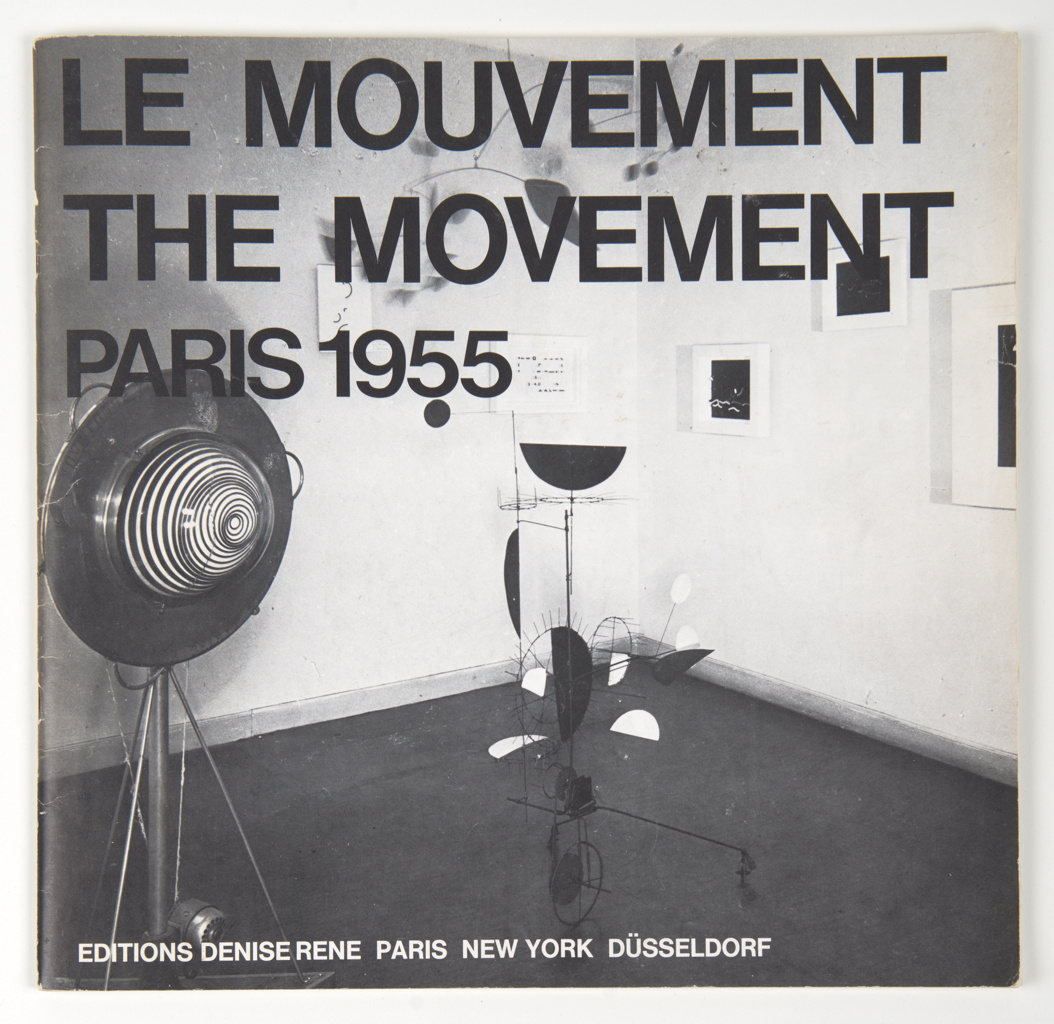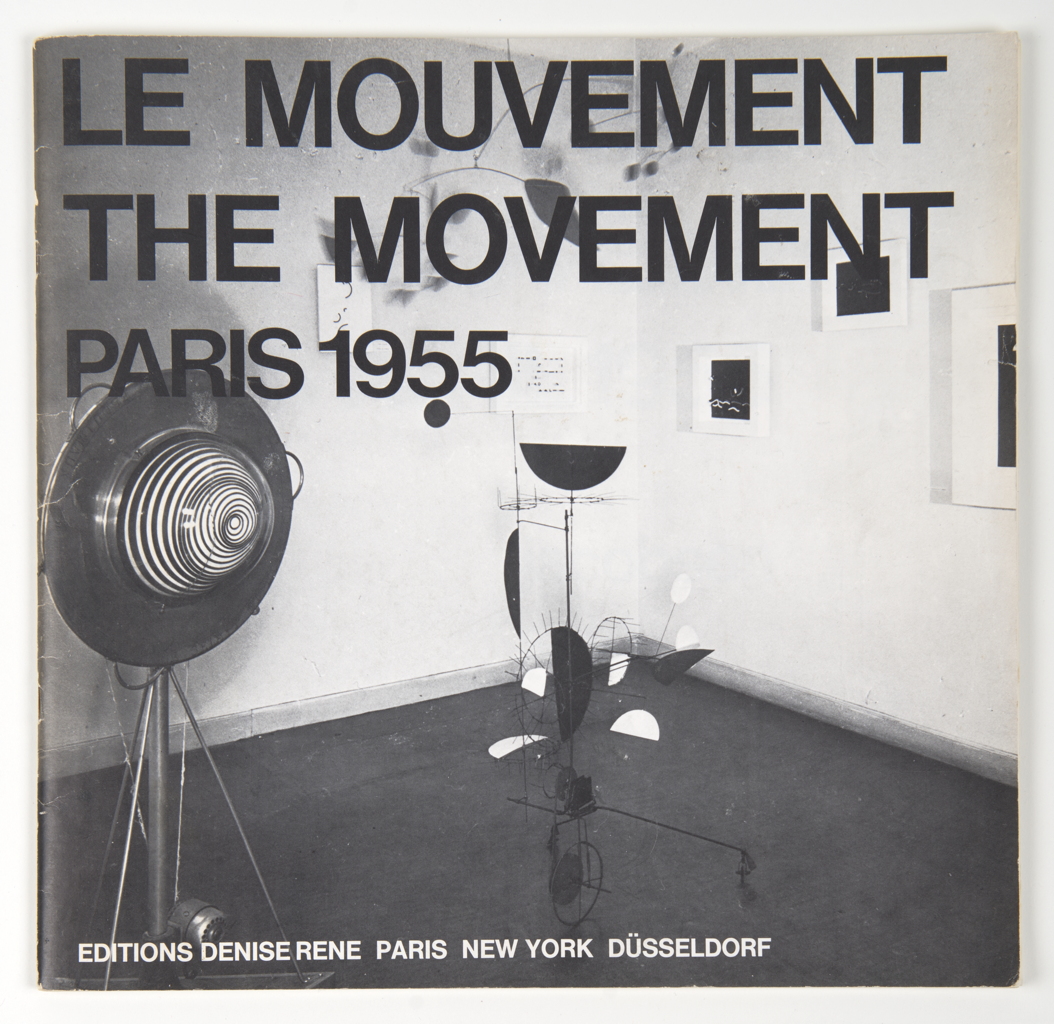Roger Bordier
Le Mouvement / The Movement / Paris 1955
1955
- Artist / Artist group
- Roger Bordier
- Title
- Le Mouvement / The Movement / Paris 1955
- Year
- 1955
- Category
- Artist Book
- Material / Technique
- offset print on paper
- Dimensions / Duration
- 30 x 31 x 0,7 cm
- Collection
- ZKM | Center for Art and Media Karlsruhe
- Description
- "We are at the beginning of a great era. THE ERA HAS NOW BEGUN IN WHICH SCULPTURAL PROJECTIONS ON TWO- AND THREE-DIMENSIONAL SCREENS ARE POSSIBLE, BOTH DAY AND NIGHT." [1] (Vasarely, 1955) In 1955, the influential group exhibition »Le Mouvement« was shown at the Galerie Denise René in Paris, and included exhibits by famous artists, who experimented with motion, such as Alexander Calder, Marcel Duchamp, Yaacov Agam, Pol Bury, Jesús Rafael Soto, Jean Tinguely, and Victor Vasarely. »Le Mouvement« is a decisive event in the history and development of the kinetic arts. The most important elements of this art trend – motion, space, and time – are visualized through various artistic approaches: works that only unfold through visitors’ movements, works that can be changed by direct interaction with the visitors, or motorized artworks that seemingly move autonomously. The exhibition was curated by Denise René, Victor Vasarely, Roger Bordier, and Pontus Hultén. In 1975, Denise René presented a different version of the exhibition at her gallery in New York. In 1975, »Le Mouvement. The Movement. Paris 1955« was published to accompany the exhibition in New York, which included texts by various artists and art critics. It also included a yellow leaflet titled the »Manifeste jaune« [yellow manifesto], which had already been published in 1955 for the original »Le Mouvement« exhibition in Paris, containing Victor Vasarely’s text »Notes pour un manifeste«. In this text, he foresees that the possibility of replication and serial production will take the place of the uniqueness of the artwork, and demands the creation of a form of art that is no longer made exclusively for the elite, but for the general public. The exhibition catalogue of 1975 also introduces the various forms of kinetic art. In addition to sculpture, the integration of film also plays a vital role by expanding the language of art to include motion, as the text »Cinéma« by Roger Bordier explains. [1] Printed in the leaflet »Manifeste jaune« in the catalogue »Le Mouvement. The Movement«, German translation Jean-Louis Ferrier, “Conversations with Vasarely” (Cologne: Galerie Der Spiegel, 1977), p. 173f.
Author
Dorothea
Deli

